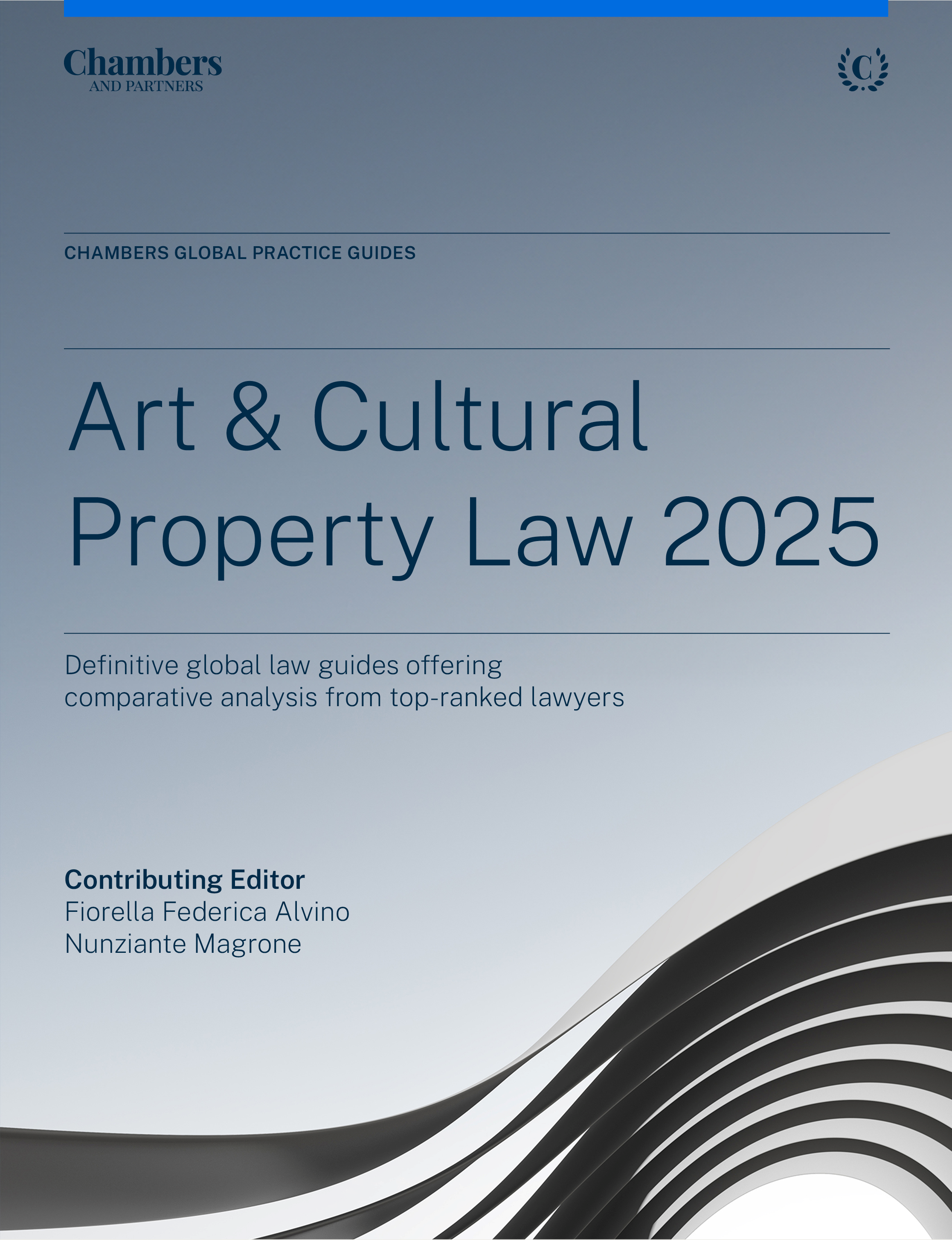
Art & Cultural Property Law 2025
The new Art & Cultural Property Law 2025 guide features 15 key jurisdictions. The guide provides the latest legal information on artists’ rights over their work, plagiarism and copyright infringement, art authentication, cultural heritage and its protection, art sales (including the roles of art advisers and auction houses), photography and its legal protection, NFTs, and art inheritance and the tax implications of gifts and trusts.
Last Updated: April 09, 2025
Compare law and practice by selecting locations and topic(s)
Select Locations

Select Topic(s)

Please select at least one location and one topic to use the compare functionality.
The Growing Relevance of Art and Cultural Property Law
Art and cultural property law has evolved into a highly specialised field, reflecting the increasing legal and commercial complexity of the global art market. With a total value exceeding USD65 billion, according to the Art Market Report 2023 published by Art Basel & UBS, the art industry attracts not only collectors, museums and galleries but also investors, financial institutions and family offices. Legal professionals are now essential actors in managing the acquisition, ownership, exportation, succession and restitution of artworks and cultural assets, especially when cross-border elements are involved. As cultural heritage becomes a focus of both national policy and global diplomacy, art lawyers must navigate a field where legal rules, historical memory and market dynamics intersect.
Italy’s Role and Regulatory Backbone
Italy’s cultural legacy is unmatched in scale and depth, and the country plays a central role in shaping international practice and standards. At the heart of Italy’s domestic regulation is the Cultural Heritage and Landscape Code (Legislative Decree No 42/2004), a comprehensive and stringent statute that governs the classification, protection, circulation and enhancement of cultural property. The Code defines cultural assets broadly, often extending public interest protection to privately owned artworks. It establishes export licensing requirements, pre-emption rights in favour of the State, and administrative procedures for the notification and control of movable heritage.
This regulatory framework has served as a model for other civil law jurisdictions and remains a cornerstone for legal professionals operating in or with the Italian art market. Understanding how Italian authorities define and manage cultural value is key to ensuring compliance, securing transactions and minimising exposure to enforcement risks.
Key Legal Challenges in the Art Market
Legal issues in this field often arise from the unique nature of artworks: their singularity, historic provenance and hybrid value as both cultural and commercial goods. Disputes concerning title, attribution, authenticity or good faith acquisition remain frequent and complex, particularly in the secondary market. Due diligence has become a central element in art transactions, often requiring multi-jurisdictional legal review.
Restitution and provenance disputes have taken on greater importance, particularly where ownership is legally uncertain or subject to international claims. These cases involve not only private parties but also states and public institutions, and they require legal advisers to balance legal argumentation with cultural sensitivity and reputational considerations.
Contractual relationships in the art world are also distinctive: sales agreements, consignment contracts, auction house terms and art-secured lending arrangements often include bespoke clauses on confidentiality, authenticity, export licensing and dispute resolution. As the art market globalises and professionalises, lawyers are increasingly asked to draft robust contractual frameworks that can withstand legal scrutiny and regulatory review.
Emerging Issues: Digital Art, NFTs and Compliance
The digital transformation of the art market introduces new legal frontiers. The rise of digital art, blockchain authentication and non-fungible tokens (NFTs) has raised pressing questions concerning intellectual property, smart contracts, ownership rights and regulatory classification. Jurisdictions are still adapting their legal frameworks to address these phenomena. In the EU, the phased implementation of the Markets in Crypto-Assets Regulation (MiCA) (Regulation (EU) 2023/1114) will introduce further obligations for NFT marketplaces and digital asset service providers. MiCA entered into force on 29 June 2023, with key provisions becoming applicable from 30 June and 30 December 2024.
Money laundering and compliance regulations are also evolving. The art sector is now subject to enhanced scrutiny under EU AML Directives, with particular obligations on intermediaries such as galleries, dealers and auction houses. Compliance programmes, client due diligence and reporting duties are no longer optional for market players. These requirements add a further layer of legal complexity to transactions and require constant updating from legal professionals.
Looking Ahead
As the international art market continues to expand and diversify, the legal profession will play an increasingly strategic role. Whether assisting in high-value transactions, advising museums on deaccessioning policies, managing estate planning involving valuable collections, or pursuing cross-border restitution claims, art lawyers must combine technical precision with cultural fluency.
Italy, with its strong regulatory framework and cultural authority, remains a pivotal jurisdiction. At the same time, international collaboration – especially within Europe and under multilateral frameworks such as UNESCO and UNIDROIT – will be critical for addressing shared challenges such as illicit trafficking, digital innovation and ethical restitution.
This guide aims to provide stakeholders with a practical and jurisdiction-specific understanding of the legal issues affecting the art and cultural property sector, as well as insights into its future evolution.


